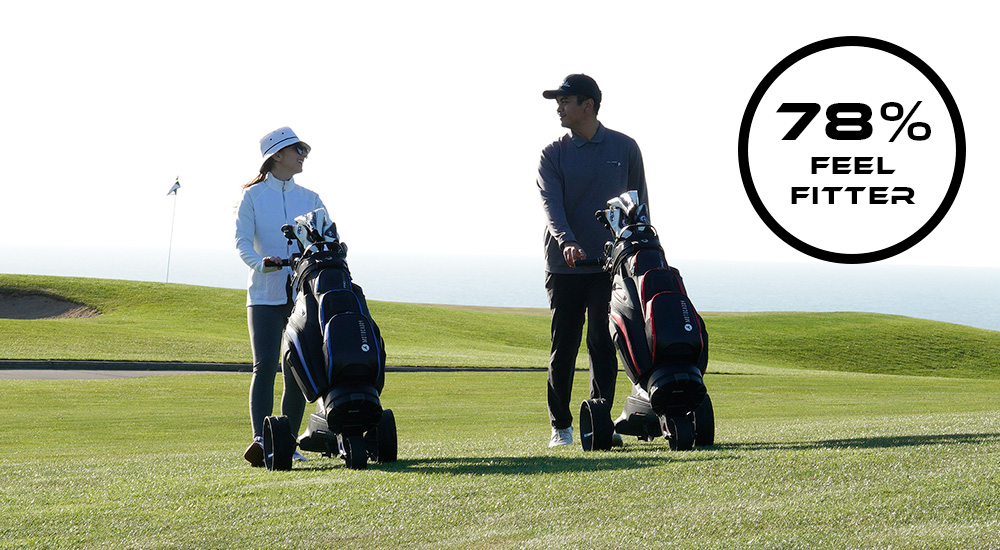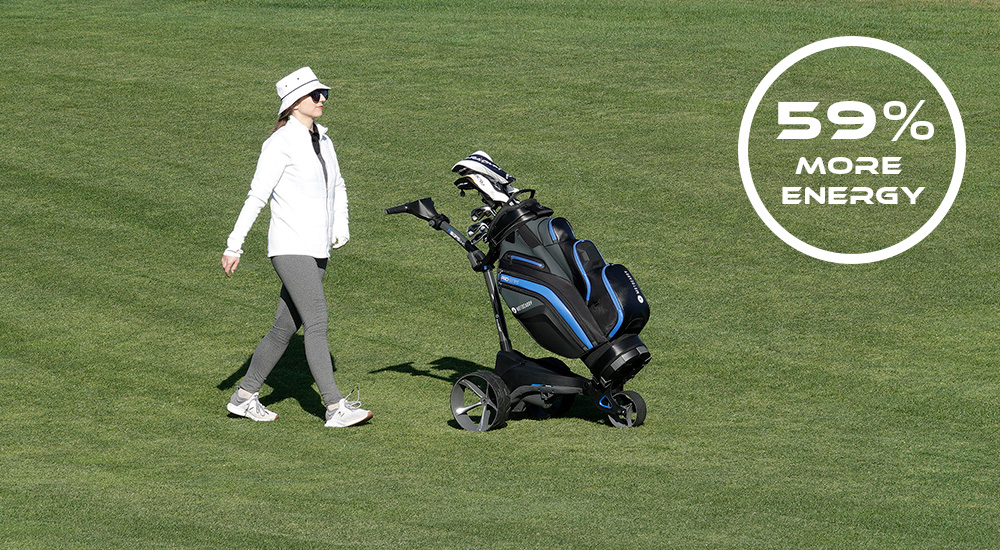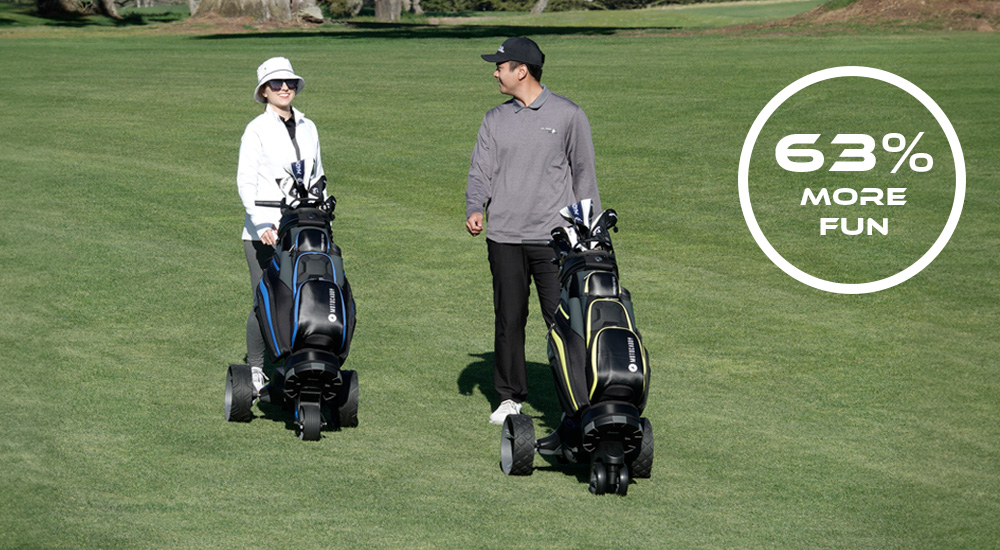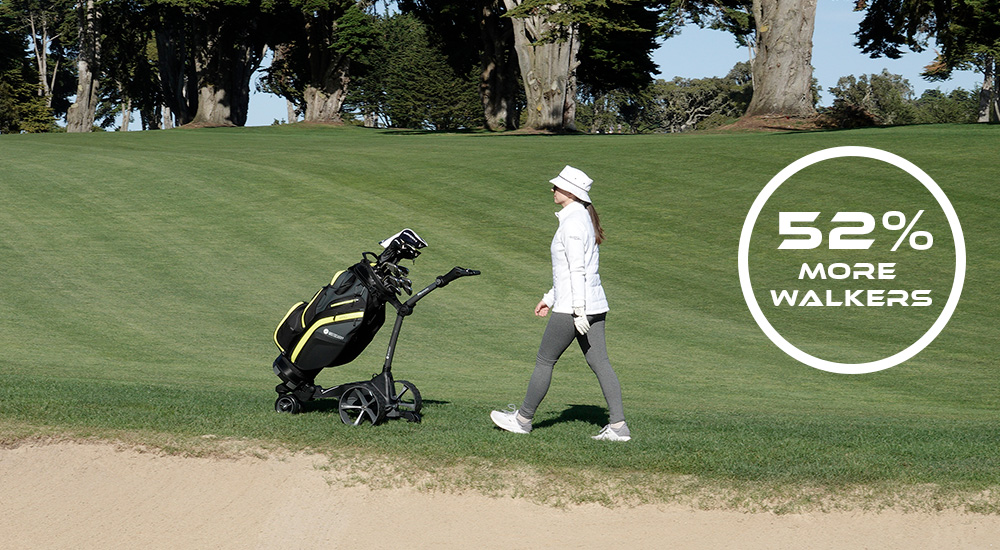
As many as three out of four golfers in North America who switched in recent times to walking the golf course using an electric caddy (78%) say they now feel fitter for having done so and more than a quarter (27%) claim to be ‘a lot fitter’.
The majority of American golfers (74%) also attribute ‘improving health’ to being the biggest benefit when using an electric golf caddy, while those in Canada - where the mode of transporting golf clubs is more established - rate ‘not having to push a trolley’ slightly higher (78%) along with playing ‘without the strain of carrying clubs’ (83%).
Three out of five golfers claim to have ‘more energy at the end of the round’, with 59% of Americans endorsing the point and 73% of Canadians following suit.

More than a third of these active golfers (35%) claim to be playing more than before they took ownership of the electric caddy and as many as 63% are finding the game more enjoyable. Regular playing partners are also using an electric caddy in almost a third of cases (29%), with it being a more frequent occurrence in Canada (40%).
The findings come from an independent survey among more than 2,700 golfers in the United States and Canada conducted recently on behalf of Motocaddy, the global leader in electric trolleys, whose product range includes the award-winning M7 REMOTE and M7 GPS REMOTE models. A significant proportion of golfers surveyed originate from the States of California, North Carolina and Florida or the Provinces of Ontario, British Columbia and Alberta.
In terms of playing better with the help of an electric caddy, as many as 81% of Canadian golfers say they have more energy to strike the ball, against 64% of American counterparts, while over half of all respondents (56%) say they have a better mentality on the course thanks to the trolley taking the strain.

And compared to a couple of years ago, one in four golfers (25%) say they’ve noticed ‘a lot more’ players using electric trolleys on the golf course where they play most often and more than half (52%) have noticed more players walking the course in general.
“These findings confirm the compelling reasons why more golfers are choosing to walk the breathtaking golf courses of North America and benefit from a healthier and more enjoyable pastime for longer,” said John Helas, Motocaddy CEO. “Our electric models are designed so golfers can enjoy the walk and take away the strain of the push cart, as well as gain the benefits of GPS course mapping and connectivity if needed,” he added.
Almost half of those with an electric caddy (46%) wish they had started using one at an earlier stage in their golfing life, with 48% of American owners admitting that's the case. A similar number (43%) say they would welcome the opportunity to try out new models, perhaps part of a rental fleet, before buying another one in the future.

According to the new breed of electric caddy users in North America, more golf clubs are supporting the healthier trend by making it easier to walk rather than ride, with 60% saying they’re making it ‘very easy’ and 22% a ‘little easier’. However, of those who said no, over half (55%) say they’d like the course they play most often to make it easier for golfers to walk if they choose to.
Online product reviews published on golf sites are the place to seek advice for nearly a third (31%) of those interested in purchasing another electric caddy, with personal recommendations and word of mouth accounting for another 30%.
With a male/female split of nine to one, the demographic of those taking part in the survey covered the age ranges of 31-50 (12%), 51-60 (18%), 61-70 (41%) and 71-80 (26%). The majority have been playing golf for over 40 years and on average they play at least once a week or more (53%). Almost half (49%) are members of a golf club, although the percentage in Canada is higher (61%).
The survey was carried out among North American men and women golfers in January & February 2024 by leading sports research company Sporting Insights.



 UK
UK AU
AU CA
CA DE
DE ES
ES FR
FR IE
IE NL
NL NZ
NZ SE
SE INT
INT










